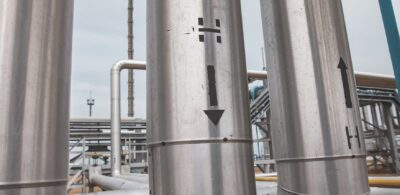Industry input requested for Australia’s Hydrogen Guarantee of Origin and Certification Scheme
01 July 2021
On 21 June 2021, the Department of Industry, Science, Energy and Resources (the Department) released a discussion paper containing its indicative design for a Hydrogen Guarantee of Origin and Certification Scheme (GO Scheme), a priority action under Australia’s National Hydrogen Strategy. While the GO Scheme is based on 2020 consultation, further input is sought from industry on the design by 30 July 2021.
We have previously written about what a hydrogen certification and guarantee of origin scheme should look like in Australia, and the state of play of hydrogen regulation in Australia. We set out some of our thoughts on the GO Scheme design below, noting that the discussion paper is a work in progress rather than guide (or final design) and further alignment with international schemes must occur. Once the GO Scheme is settled, an overhaul of our current legislative framework will be required to align with it.
The design approach
The GO Scheme is being designed with the intention that it will align with international schemes.
An internationally aligned GO Scheme will promote international trade and we agree that the Department should strive towards this goal. However, like in Australia, international schemes are still in the process of being developed. The most advanced of these is CertifHy, an industry-led and private scheme currently in its second phase of implementation in Europe.
In recognition of the continuing development of international schemes, the GO Scheme design is based on discussions coming out of the Department’s participation in the Hydrogen Production Analysis Taskforce as part of the International Partnership for Hydrogen and Fuel Cells in the Economy (IPHE). There are 22 member countries of the IPHE including many European Union countries, Japan, the United States and South Korea.
While the Department’s involvement, and leading role, in certain aspects of the IPHE’s work streams are vital for international acceptance of any Australian GO Scheme, we note that the IPHE members are yet to formally adopt any final positions on scheme designs. Official stances are expected to be announced later this year. Once adopted, the Department may need to amend the GO Scheme to align with the international position.
Hydrogen production pathways
The GO Scheme covers three common pathways of producing clean hydrogen: electrolysis (with renewable or grid-sourced electricity), coal gasification with carbon capture and storage (CCS) and steam methane reforming with CCS (SMR).
The coverage of these pathways in the initial GO Scheme will provide investors and financiers with an indication of the type of hydrogen projects they may wish to invest in.
The Department also proposes to expand the coverage of the initial GO Scheme to include all other pathways producing clean hydrogen (for example, through biomass). Currently, other production pathways are not included because the methodology of calculating emission for those pathways needs to be developed further.
Carbon accounting methodology
The discussion paper invites consultation on a number of aspects of the proposed carbon accounting methodology for the initial GO Scheme and we highlight here several aspects which we consider to be important.
The system boundary
The Department proposes to track emissions for hydrogen production within a ‘well-to-gate’ boundary as a starting point, noting that this boundary may eventually need to be expanded to include other parts of the value chain.
A ‘well-to-gate’ boundary will track the emissions associated with the supply of feedstocks (including extraction, processing and transportation of fossil fuels) to the production and processing of the hydrogen. Within this boundary, scope 1 and scope 2 emissions will be tracked.
We consider that the ‘well-to-gate’ boundary is appropriate for the initial GO Scheme. As the discussion paper highlights, a ‘well-to-gate’ boundary is adopted by the CertifHy scheme and is the boundary preferred by IPHE members. Adopting this boundary will provide Australia with the best possibility of aligning its scheme with international schemes.
Carbon accounting frameworks
The discussion paper considers a number of domestic and international carbon accounting frameworks which may be used for estimating and reporting the carbon emitted from the production of hydrogen. The domestic frameworks being National Greenhouse and Energy Reporting (NGER) and Climate Active and the international frameworks being International Organization for Standardization standards (ISO standards) and the Greenhouse Gas Protocol (GHG protocol).
The discussion paper indicates a preference for application of the ISO standards and GHG protocol as the overarching carbon accounting framework, with reference to the frameworks of NGER and Climate Active where practicable. This is due to international alignment preferences and fundamental issues with the suitability of the domestic frameworks, in particular NGER’s which, as currently formulated, does not capture all upstream and downstream emissions that would be required to be accounted for under a ‘well-to-gate’ system boundary. Following this preferred approach would therefore, in our view, allow for greater consistency of the GO Scheme with international schemes.
Verification of renewable electricity
While some projects may use ‘behind the meter’ renewable energy from solar or wind, it is recognised that most utility scale projects are likely to be connected to the grid. Consequently, to verify and track the use of renewable electricity in the production process of hydrogen, the Department suggests the use of large-scale generation certificates (LGCs). One LGC represents one megawatt per hour of electricity generated from a renewable energy source.
There are two major limitations with this approach:
- LGCs may not be created if the electricity generated is below the power station’s renewable power baseline; and
- Under current legislation, LGCs will not be created after 2030 meaning, unless further legislation is passed, their usefulness to a GO Scheme will be short-lived.
To address these limitations, the Department proposes the creation of a new ‘renewable GO certificate’ which operates on a market-based method of surrender of LGCs rather than a location-based method of where the LGCS are created. The new GO Scheme looks to ameliorate the current concerns with LGCs, to be more consistent with the international approach and also to recognise other sources of renewable energy not currently captured. On that basis we are broadly in agreement with the proposals.
Treatment of offsets
While internationally there is uncertainty as to carbon offsets being included in an international scheme, the Department is seeking consultation on whether offsets should be used to reduce the emissions associated with the production of hydrogen.
Two options are proposed:
- Option 1: offsets would not be included. The Clean Energy Regulator is in the process of developing methods allowing for the issue of Australian Carbon Credit Units for carbon capture and storage projects which may be surrendered to that end. This is consistent with IPHE discussions on the issues as of the date of the discussion paper; and
- Option 2: offsets from any eligible projects may be used to reduce the emissions recorded.
While emission reductions in any degree are important and should be encouraged, to ensure the long-term integrity of the GO Scheme and projects that rely on it, Option 1 is the preferable route to encourage actual emission reduction. Recent shareholder activism, court decisions and general consumer trends are showing that project proponents need to show actual abatement and not rely on purchase of offsets to ‘greenwash’ their project, although, in our view, offsets should remain available as the last means of defence to bring an organisation to net zero.
Co-product emissions
A significant feature of the GO Scheme design is it proposes to allocate a portion of the emissions generated from the hydrogen production pathway to commercial co-products created by that pathway. For example, the oxygen created through electrolysis that is sold to, among other buyers, wastewater treatment plants.
This feature is significant as it departs from the position in the CertifHy scheme. It also complicates the scheme as allocation of emissions to co-products is not always possible or practical. The discussion paper acknowledges this and seeks industry input on how to adopt a system expansion design supported by energy-based allocation where system expansion is unworkable. It will be interesting to see how this unfolds.
Final thoughts
The discussion paper released by the Department is a key milestone in Australia’s National Hydrogen Strategy. It provides valuable insights on the development of Australia’s hydrogen GO Scheme and identifies the areas which require further consultation.
We look forward to the trial phase of the GO Scheme later this year.
Authors

Partner
Tags
This publication is introductory in nature. Its content is current at the date of publication. It does not constitute legal advice and should not be relied upon as such. You should always obtain legal advice based on your specific circumstances before taking any action relating to matters covered by this publication. Some information may have been obtained from external sources, and we cannot guarantee the accuracy or currency of any such information.


